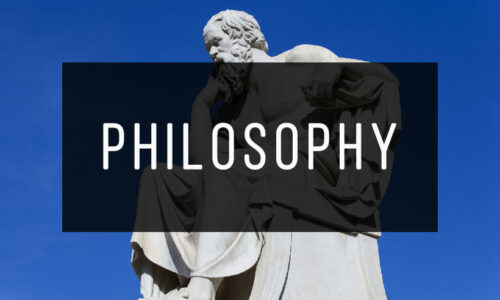Today we present to you a compilation of the 15 best books by Robert Louis Stevenson. But first, a little about the life of this renowned writer.
Robert Lewis Balfour Stevenson was born in Edinburgh, Scotland, on November 13, 1850, son of Thomas and Margaret Stevenson. Lighthouse design was his father’s and his family’s profession, so at the age of 17, Stevenson enrolled at the University of Edinburgh to study engineering. However, lighthouse design never appealed to him and he began studying law.
He graduated from law school in 1875, but did not practice, as he felt his vocation was to be a writer.
In 1878, Stevenson published his first volume of work, «An Inland Voyage»; the book chronicled his journey from Antwerp to northern France, which he made in a canoe down the Oise River. A companion work, «Travels with a Donkey in the Cevennes» of 1879, continues in the introspective vein of «Inland Voyage».
Also from this period are the humorous essays «Virginibus Puerisque and Other Papers» (1881), and the first book of short fiction «New Arabian Nights» (1882). These stories marked the emergence of the United Kingdom in the field of the short story, which until then had been dominated by Russians, Americans and French.
In September 1876 he met his future wife, Fanny Osbourne. An American of 36, she was married (though separated) and had two children. Stevenson and Osbourne began seeing each other romantically while she remained in France. In 1878, she divorced her husband and the two married in 1880.
After they were married, the Stevensons enjoyed a three-week honeymoon at an abandoned silver mine in California’s Napa Valley, and it was from this trip that «The Silverado Squatters» (1883) was born. In the early 1880s the stories «Thrawn Janet» (1881), «The Treasure of Franchard» (1883) and «Markheim» (1885) also appeared.
The 1880s were remarkable both for Stevenson’s deteriorating health and for his prodigious literary output. He was suffering from a pulmonary hemorrhage, and writing was one of the few activities he could engage in while in bed. In bed he wrote «Treasure Island» (1883), «Kidnapped» (1886), «Strange Case of Dr. Jekyll and Mr. Hyde» (1886) and «The Black Arrow» (1888).
In 1886, «Strange Case of Dr. Jekyll and Mr. Hyde» was published, which was an immediate success and helped to establish Stevenson’s reputation. The book was internationally acclaimed, inspiring countless theatrical productions and more than 100 films.
In June 1888, Stevenson and his family set sail from San Francisco, California, to tour the islands of the Pacific Ocean, stopping at the Hawaiian Islands, where he befriended King Kalākaua. In 1889 they reached the islands of Samoa, where they decided to settle. The island environment stimulated Stevenson’s imagination and thus were born «The Wrecker» (1892), «Island Nights’ Entertainments» (1893), «The Ebb-Tide» (1894) and «In the South Seas» (1896).
Stevenson died of a stroke on December 3, 1894 at his home in Vailima, Samoa.
1) An Inland Voyage

An Inland Voyage is a travelogue published in 1878 about a canoe trip Stevenson took when he was a young man of 26. He made this trip in the fall of 1876 and it took place in France and Belgium, mainly along the Oise River. The itinerary he followed has become a popular route that travelers often replicate.
At that time, outdoor recreational travel was unusual, so when he reached a village with his canoe, the inhabitants would come out on the banks to greet him and encourage him to return soon.
While in Belgium, he passed through very industrial areas, which was not very scenic or pleasant, but then he went by rail to France, starting in Maubeuge and ending in Pontoise, near the Seine.
2) Catriona

Catriona is an 1893 novel that continues the story of Kidnapped (1886); in fact, it begins as the latter ends, at 2 o'clock in the afternoon of August 25, 1751, in front of the British Linen Company in Edinburgh, Scotland. Like its predecessor, it has as its protagonist the hero David Balfour.
The first part of the novel narrates David's attempts to get justice for James Stewart, who has been arrested and accused of complicity in a murder. But after some events he is kidnapped again and confined on an island until the trial ends and James is sentenced to death.
The other part tells us when David meets and falls in love with Catriona MacGregor Drummond, with whom he travels to Holland and takes her under his protection. The two become close friends, but a series of misunderstandings begin that end up separating them, although later they manage to meet again.
3) Edinburgh

Edinburgh is a non-fiction travel book first published in December 1878, which began as a series of articles that appeared in The Portfolio magazine. It is divided into ten chapters and serves as a guide, memoir, and compilation of the social history of the city.
It consists of an introduction to each area of the city, information about its history and its most famous buildings. It also contains a series of essays describing different areas such as: the Old Town, Parliament Close, the New Town, the villas in Morningside, Calton Hill and the Pentland Hills.
In this book Stevenson has no qualms about giving a frank description of the city, including details of its darker aspects and some of its inhabitants, such as Deacon Brodie, whose double life served as inspiration for The Strange Case of Doctor Jekyll and Mr. Hyde.
4) Essays in The Art of Writing
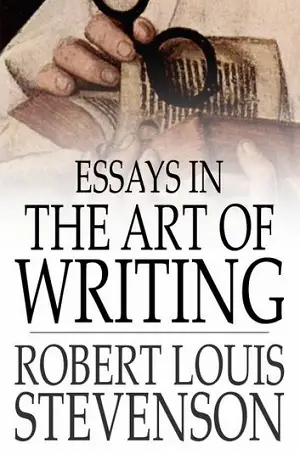
Essays in The Art of Writing, as the name suggests, this is a series of essays from 1905 in which Stevenson reveals the processes he employs when writing, also reviews the elements of poetry and prose, and what distinguishes the two.
He also takes the reader inside his creative process, and explains what he believes it takes to be an accomplished storyteller. Among the essays included is "Books Which Have Influenced Me", where the reader can discover how Stevenson's thinking was shaped by some important authors.
Likewise, it includes essays on two of his own books, one of which deals with the birth of Treasure Island, which began as a map he drew of an imaginary island. Stevenson used this map as the basis for developing the story of this book, an adventure tale that has undoubtedly influenced many later pirate stories.
5) Fables

The fable is a literary art of great appeal to Stevenson, so over the years he devoted himself to putting together a collection of Fables that were later published in 1896. This book consists of 20 peculiar tales that can be both funny and amusing as well as creepy.
Among the titles we can mention: The Poor Thing, The Citizen and the Traveller, The Sick Man and the Fireman, The Distinguished Stranger, The Devil and the Innkeeper, The Touchstone, The Two Matches, The Reader. All of them are true masterpieces of art and wit that should be better known than they are.
This collection is very varied, the reader will find very short stories of barely 2 pages and others much longer; which have among their characters common people, kings and princesses, wise women, and animals.
6) Familiar Studies of Men and Books
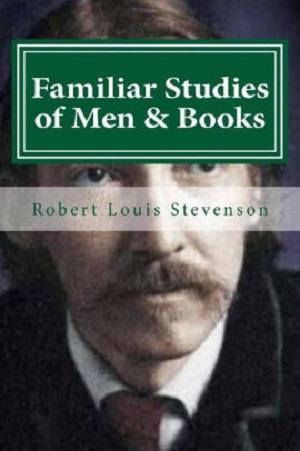
Familiar Studies of Men and Books is a series of "informal" or "conversational" essays from 1882, in which Stevenson expounds his opinion on the works of nine great writers in the manner of a literary critic. Some of the authors are: Victor Hugo, Walt Whitman, Robert Burns, François Villon, Yoshida-Torajiro and Samuel Pepys.
In addition, in the preface Stevenson performs a self-evaluation of his own essays, highlighting how his opinions have changed since the time they were written.
Don't miss the opportunity to read this critical study that explores the life and work of nine writers from around the world, including a moral assessment of them. It will surely be an excellent gateway for you to get to know their works if you haven't had the opportunity to read them yet.
7) In the South Seas
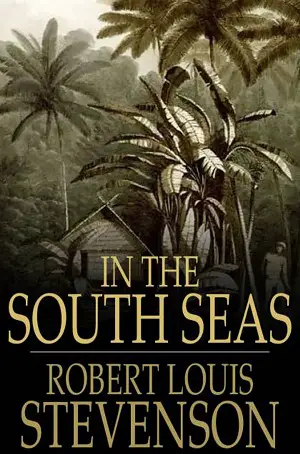
In the South Seas, 1896, is the result of the information Stevenson had gathered about the history, culture, language, customs and traditions and society of the South Seas, including, of course, his personal impressions.
This book was born out of the Scottish author's travels with his family in which he had collected a mixture of peculiar and beautiful stories, including the wild and the civilized of the places he visited.
He worked on it from October 1889 to the autumn of 1891, for he wanted its content to be more than an amusing narrative centered on the traveler. But along the way he encountered much opposition from his wife and relatives, as well as from publishers, which led him to become discouraged and abandon the work, which was later published posthumously.
8) Island Nights' Entertainments
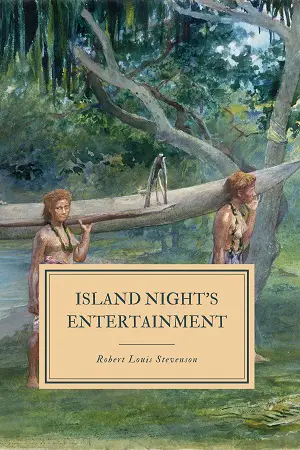
Island Nights' Entertainments is a collection of 3 short stories first published in 1893. It contains the stories: The Beach of Falesá, The Bottle Imp and The Isle of Voices; brilliantly constructed, exciting and rich in imagination.
It can be said that The Beach of Falesá is a novel of manners. Although the island where the story takes place is fictitious, it brings to the foreground the manners of the different social classes of the island society, describing facts Stevenson learned in his travels through the South Seas.
In The Bottle Imp, a poor man named Keawe buys a strange bottle that has an imp inside that grants wishes, but, of course, there is a catch. The Isle of Voices stars Keola, a man who lives on the island of Molokai with his wife and her father, who is a sorcerer with an endless supply of money despite never having worked.
9) Kidnapped
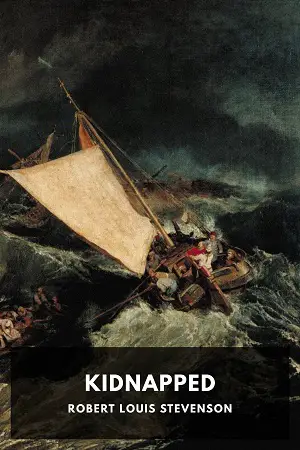
It is a historical fiction adventure novel first published in Young Folks magazine from May to July 1886. It is set in real events of the eighteenth century in Scotland, many of the characters are real people, including the Scottish soldier and Jacobite Alan Breck Stewart.
It tells us about the adventures of David Balfour, a 17-year-old boy, how he was kidnapped, his sufferings on a desert island, his relationship with Alan Breck Stewart, etc. After the death of his parents, David ends up in the home of his uncle Ebenezer Balfour, a miser who wants to get rid of him at all costs so as not to give him the inheritance that belongs to him.
Among the themes addressed in this novel are justice and the imperfections of the judicial system. It is worth noting that Kidnapped won the praise of writers such as Henry James, Jorge Luis Borges and Hilary Mantel.
10) Lay Morals and Other Papers
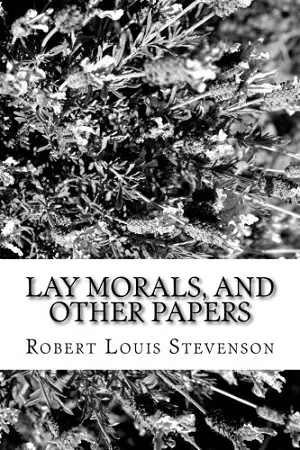
Lay Morals and Other Papers is a collection of Stevenson's essays first published in 1911. It includes the title essay, Lay Morals, and was also the first publication in a book of his most famous essay, Father Damien. Other writings include: The Day After Tomorrow, The Great North Road, and Heathercat.
Father Damien was a response to a letter from the Presbyterian Reverend C.M. Hyde published in The Presbyterian newspaper on October 26, 1889. In the letter, Hyde criticized the work of Damien, a Roman Catholic missionary at a leper settlement on Molokai, which outraged and upset Stevenson.
Be sure to read these essays and reflections on ethics by a writer considered one of the best of the 19th century.
11) New Arabian Nights

It is a collection of short stories first published in 1882, which had previously been published in magazines between 1877 and 1880. The collection contains what some critics consider Stevenson's best stories.
The stories in New Arabian Nights are set in modern Europe. And this work is divided into two volumes, the first consisting of two groups of stories: The Suicide Club and The Rajah's Diamond. In turn, it contains seven stories that were originally called Later-day Arabian Nights and were published in serial format from June to October 1878.
The second volume is a collection of four stories independent of each other. These are: The Pavilion on the Links (1880), A Lodging for the Night (1877), The Sire De Malétroits Door (1877) and Providence and the Guitar (1878).
12) Prince Otto, a Romance

Prince Otto, a Romance is a novel first published in 1885, which Stevenson defines as his hardest effort, in fact he rewrote one of the chapters eight times, being also rewritten by his wife once.
In the story we have Prince Otto Johann Friedrich, ruler of Grünewald, who escapes from his escort and enters the neighboring country of Gerolstein. There he hides his true identity under a disguise and while discussing the state of affairs with his subjects, they express their dissatisfaction with his government due to his ineffectiveness in ruling.
It is also revealed that Baron Gondremark, Grünewald's prime minister, has begun preparing a revolt. Once back in the castle, Otto seeks to improve himself and prevent his land from revolution and war.
13) St. Ives
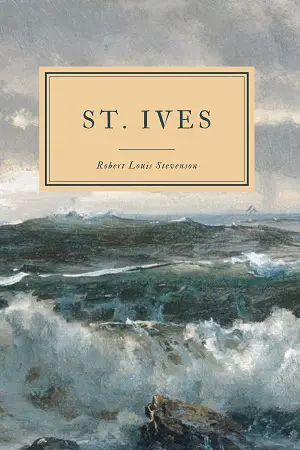
It is an unfinished novel by Stevenson that was completed in 1898 by Arthur Quiller-Couch. In fact, already unable to write, Stevenson dictated thirty chapters of the novel to his stepdaughter.
The plot is set during the Napoleonic Wars and deals with the adventures of the hero St. Ives, a French soldier and prisoner of war after his capture by the British, who is imprisoned in Edinburgh Castle. While in prison he is known as Champdivers.
One day, the lawyer, Daniel Romaine, visits St Ives and tells him that the Count (who is his great uncle) wants to meet him and will make him heir to his estate. Daniel gives St Ives some money and tells him that his uncle is at Amersham Place, where our protagonist goes after having escaped.
14) Tales and Fantasies
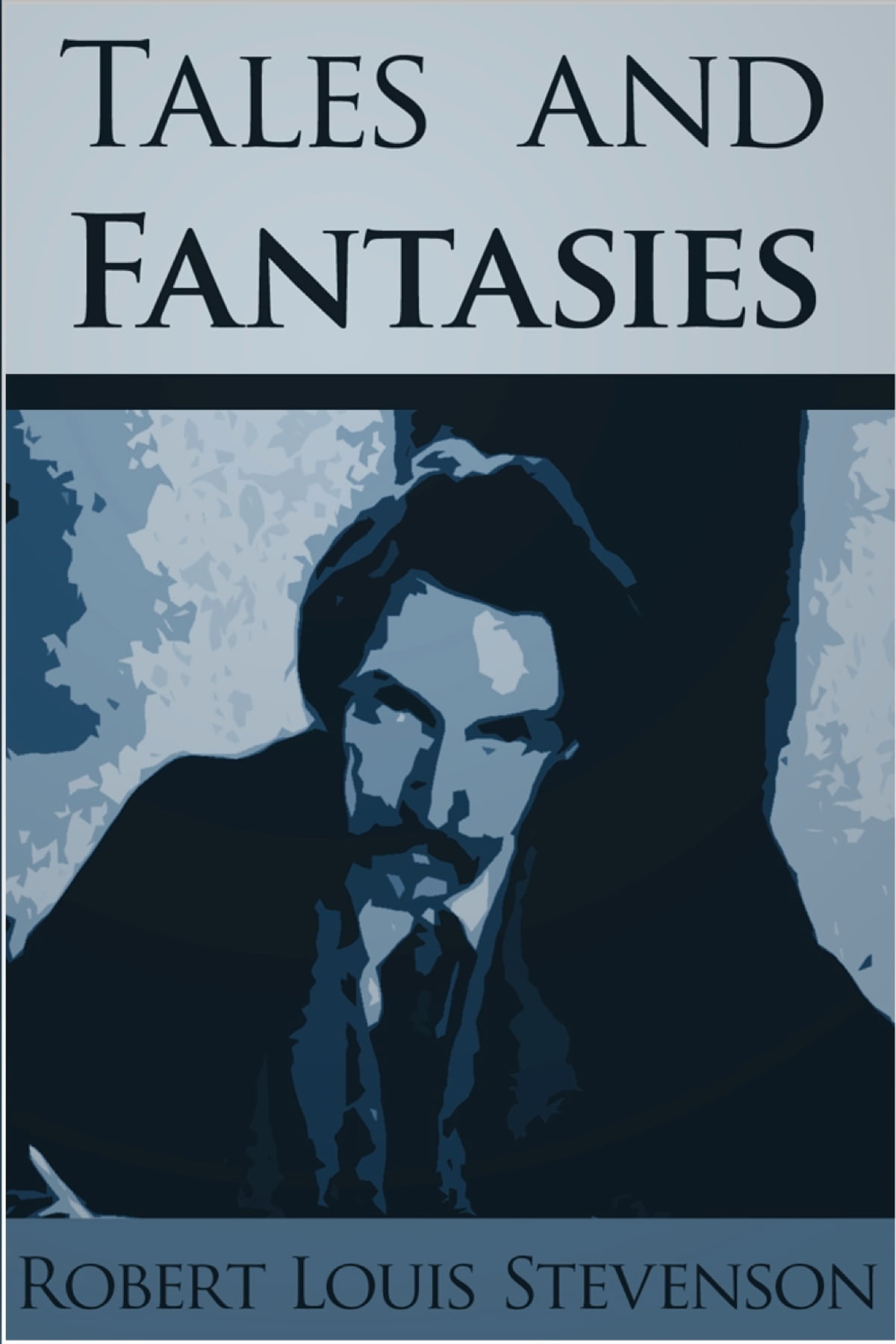
Tales and Fantasies is a collection of stories published posthumously in 1905, containing 3 works: two novellas and a short story. The novellas are The Misadventures of John Nicholson: A Christmas Story (1885-87) and The Story of a Lie (1879), the short story is The Body Snatcher (1881).
The Misadventures of John Nicholson tells the story of this young man from Edinburgh, who was not only ungraceful, but also had a very bad luck that always seemed to put him in the wrong place at the wrong time. The Story of a Lie is a humorous tale of young love cut short by lies and unhelpful parents.
The Body Snatcher is considered one of Stevenson's most famous horror stories, in which medical students are tasked with obtaining corpses to dissect.
15) The Black Arrow. A Tale Of Two Roses
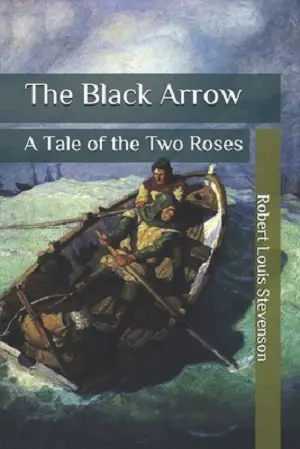
Originally published in folio form throughout 1883, The Black Arrow is a novel in which Stevenson gave himself fully to the free course of the pen in a vibrant plot of action, love and adventure.
Set in medieval England, during the course of the War of the Two Roses that pitted the Houses of Lancaster and York against each other for the crown of the country, it tells the story of young Dick Shelton, who, after fleeing from the assassins of his father, the knight Sir Harry, finds refuge and shelter among the outlaws of the Black Arrow company, who will help him reach a happy ending.

























